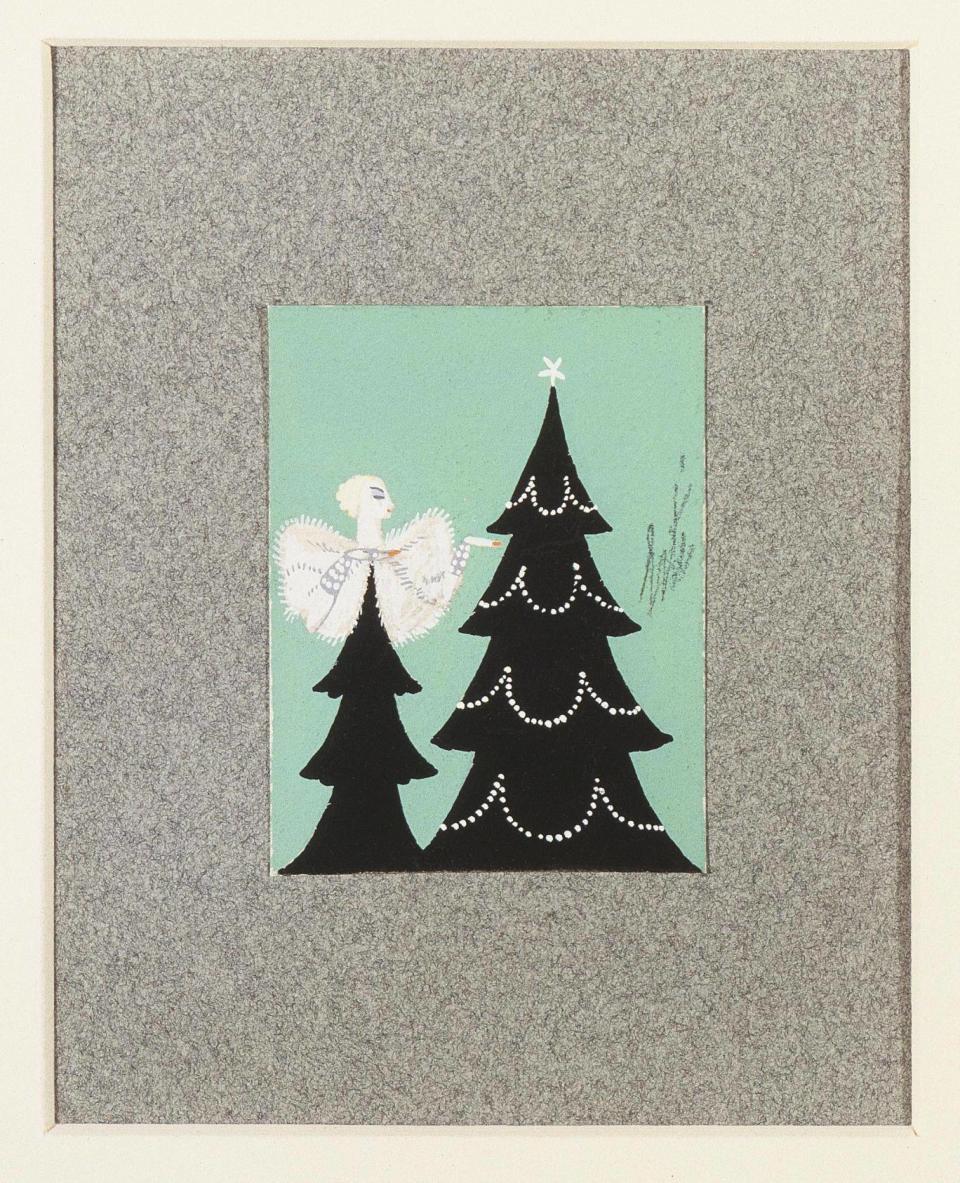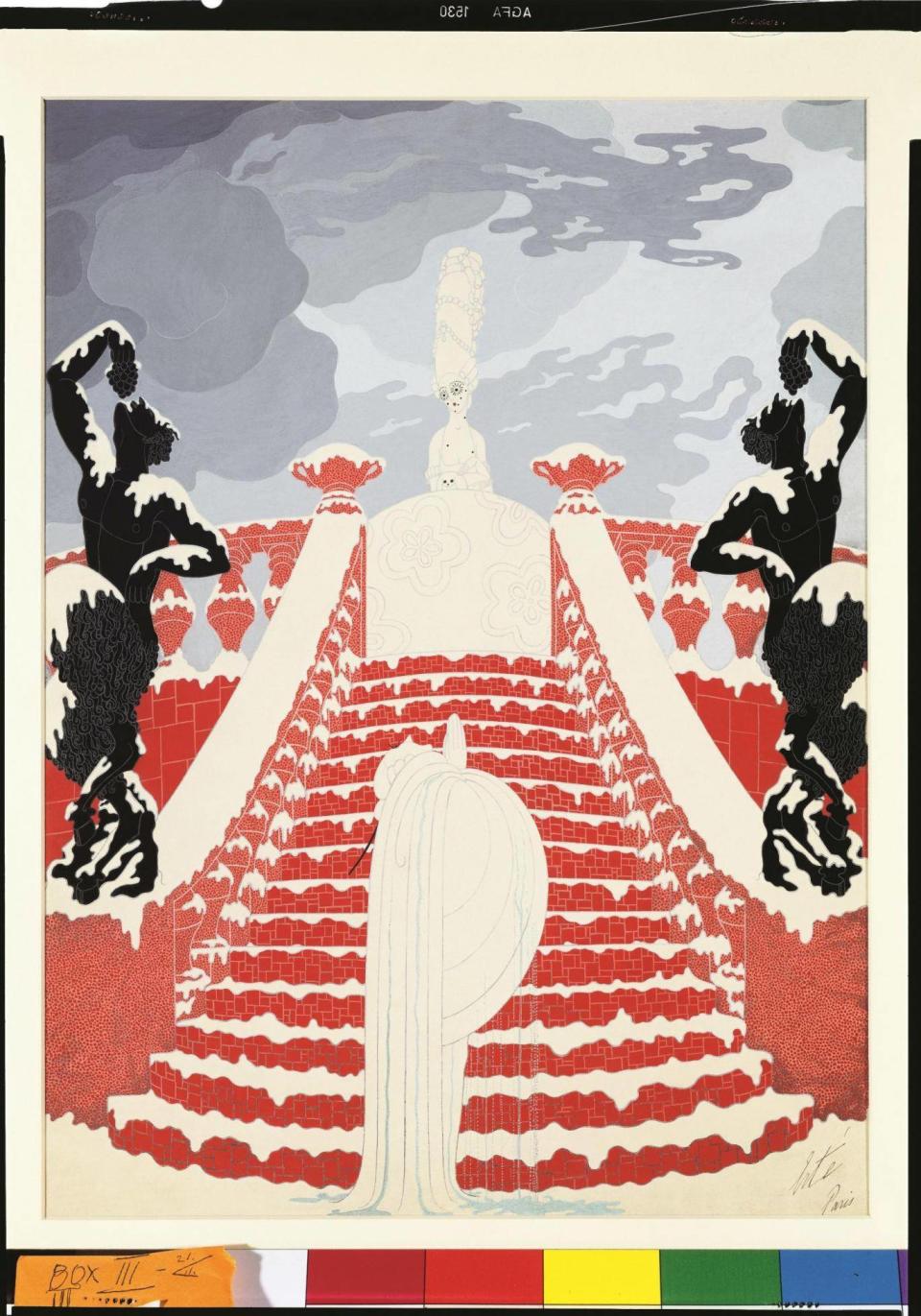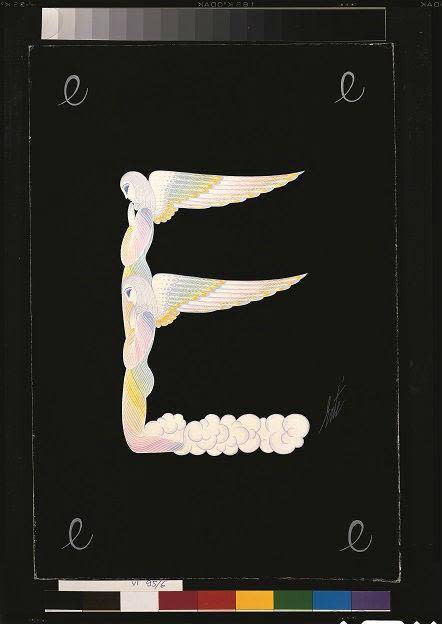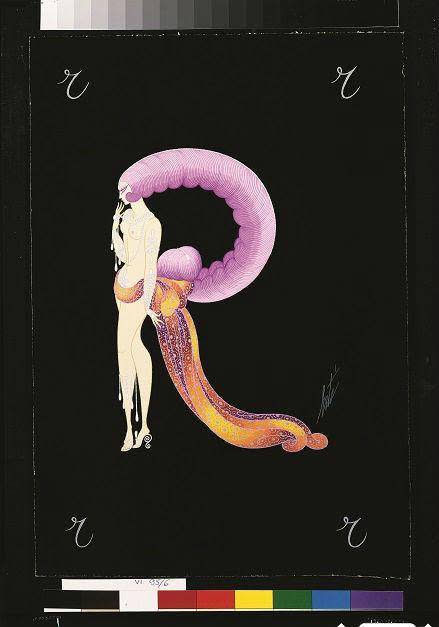Erté: A Celebration, Grosvenor Gallery, London, review: Not the best place for a new generation to discover him

Do you remember Erté? One of the most acclaimed and fêted designers in the worlds of fashion, theatre, opera and film, whose Art Deco designs graced the covers of glossy magazines and who lived a charmed life until his 99th year (1892 -1990)?
If you were born before the 1960s, you couldn’t possibly escape his breathtakingly elegant and imaginative inventions, whether you were buying a pair of tights (his 1974 design for the Charnos stocking packaging) or flicking through the pages of Harper’s Bazaar (he produced hundreds of covers from 1915). He had many fans, including the late art critic Brian Sewell, who writes in his eloquent catalogue essay that Erté “had neither equal nor rival; he was and remains unique”.

The Grosvenor Gallery, tucked away in St James’s London, is perhaps not the best place for a new generation to discover him. It is small and discreet, and the ambition of the exhibition Erté: A Celebration (shown first at St Petersburg’s Hermitage Museum last year) is cramped and almost skewered by the available space. Nevertheless, if you do venture there you will find more than 100 wonderful original gouaches by this Russian-born French artist, whose pseudonym was derived from the French pronunciation of the initials of his full name – Romain de Tirtoff.
All the works come from the private collection of Eric and Salome Estorick, who were the friends and dealers of Erté for some 50 years, and who founded the Grosvenor Gallery in 1960.
In this respect, the exhibition has found its natural home. The centrepiece is Erté’s exquisite Alphabet suite (1927-67), in which all 26 letters are imagined in individual gouaches on paper, in exotic human form (and later formed print editions). This exhibit was a sensation when it was first shown in London 1967; earlier that year Erté’s first solo exhibition had been purchased in its entirety by the New York Metropolitan Museum of Art. The art critic John Russell remarked: “If Michelangelo came back to earth, he wouldn’t have had more publicity.”

The style is sexy, stylised and saucy, with pert-breasted nudes and flamboyant performers reminiscent of Diaghilev dancers and circus acts, bending and contorting themselves into the shapes of the letters. The costumes and designs that clothe, entwine, shackle or decorate their bodies – whether oriental headdresses, foliage and flowers, strings of pearls, flimsy lace, mermaid tails, or slinky leopard print – are impossibly inventive and playful.

All the works in the two-week show – which marks the 50th anniversary of the 1967 exhibition – are for sale. And, with the exception of Alphabet, the prices are remarkably affordable (starting from £750 for a Harper’s design). Among the highlights are several 1920s cover designs for Harper’s Bazaar, such as the Corp de Neige – Coeur de Feu.
Erté was incredibly disciplined: he produced some 22,000 designs during his career, and in his nineties was still hard at it, completing 100 new designs for a Glyndebourne opera production.

This is possibly the last chance to see his Alphabet as an ensemble – even though Z is hung slightly apart due to lack of wall space. Hopefully, it will be purchased by a public collection, and maybe Erté – whose works are too small-scale for today’s big collectors – will have his moment again.
‘Erté: A Celebration’, Grosvenor Gallery, London until 30 November

